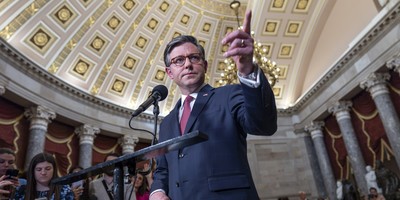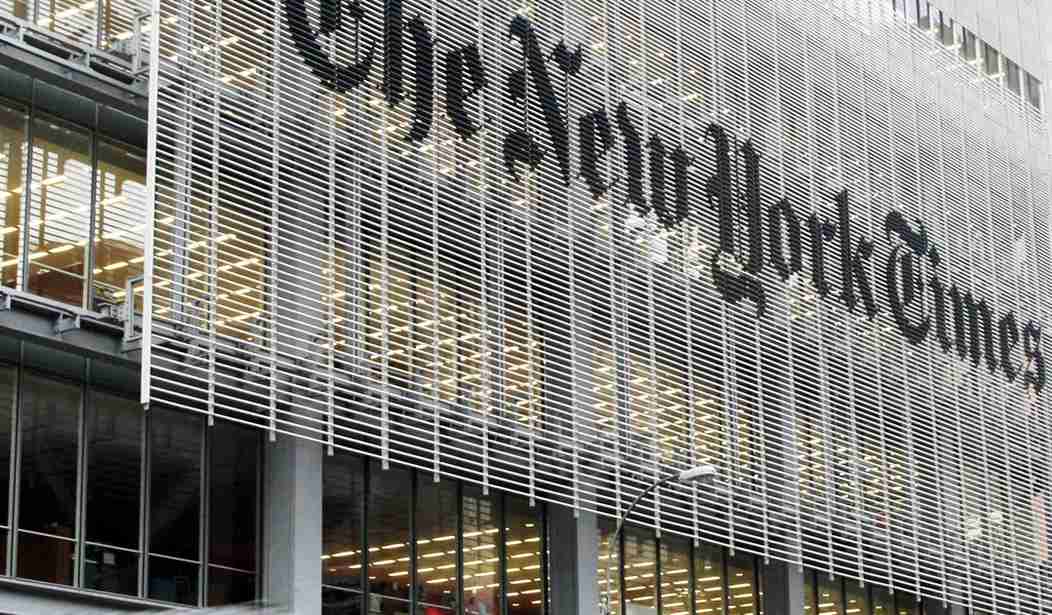When an event was held in Garland, Texas, last week that included a $10,000 prize for the best drawing of the Muslim prophet Mohammad, it was no surprise that many Muslims, particularly radical ones, would be upset. Considering that radical Muslims have spent a lifetime being upset, and in the wake of the Charlie Hebdo attack, it also wasn’t shocking that two of them would attempt to kill everyone who dared look at what they didn’t want drawn. That’s the world we live in right now.
What was surprising was the reaction to the attempted mass murder and how the blame went to those targeted for death more than the would-be killers.
The Associated Press actually tweeted out a link to a story on the aftermath of the event that read, “Pamela Geller says she has no regrets about Prophet Muhammad cartoon contest that ended in 2 deaths.” How dare the event organizer not apologize for “asking for it” by having an event where people draw, right?
The New York Times took the “she shouldn’t have worn such a short skirt to the bar” mentality to the next level.
The Times editorial board wrote an attack on the event under the name, “Free Speech vs. Hate Speech.” The people who run the “paper of record” actually wrote, “the Muhammad Art Exhibit and Contest in Garland, Tex., was not really about free speech. It was an exercise in bigotry and hatred posing as a blow for freedom.”
Not finished deflecting from the fact that two men literally set out to murder people for drawing pictures or attending an event where those pictures were drawn, the Times took it a step further.
“Some of those who draw cartoons of the Prophet Muhammad may earnestly believe that they are striking a blow for freedom of expression,” they wrote, “though it is hard to see how that goal is advanced by inflicting deliberate anguish on millions of devout Muslims who have nothing to do with terrorism.” Anguish? ANGUISH? It’s a drawing of a guy who no one knows for sure what he looked like done by people who don’t subscribe to his religion. That causes anguish?
Recommended
Also, people were going to murder them – not critique their skills, but murder them – for those drawings. If these Muslims who suffered “deliberate anguish” were otherwise moderate people and accepting of others who don’t share their beliefs, no drawing, no matter how much they dislike and disapprove of it, would lead them to murder.
The two terrorists who were killed by police weren’t participating in a drum circle and singing “Kumbaya” at a diversity seminar until they heard about the drawings. They were inclined to kill and waiting for something they deemed “worth it.”
It seems the Times’ sensitivity toward religious people is something new and seemingly very specific to Muslims.
In 1988, when the movie “The Last Temptation Of Christ” came out, many Christians protested its depiction of Jesus. (I found the movie to be faith affirming, but whatever.) The Times had no time for religious sensitivities when it came to Christians being offended.
The editorial entitled “Satanism in Hollywood,” contain the following paragraph:
Those offended by such works certainly have the right to condemn, to shun and to picket. But in a free Republic, where church and state are wisely divorced, critics have no sanction for censorship. It says something about the persistence of Pharisaism (''rigid observance of external forms of religion without genuine piety'') that some of the loudest voices denouncing distribution, like Patrick Buchanan, also trumpet their devotion to free speech and free markets.
Principle, it would seem, is not a constant to the “old gray lady.”
When taxpayers subsidized “Piss Christ,” the “art” consisting of a picture of a crucifix in a jar of urine, angry Christians were not only brushed off by the Times, the “artist” was praised and defended. “It is hard to believe that anyone whose faith is searching and secure would not be grateful for what Mr. Serrano has done,” the Times wrote.
While it seems like a long journey from defending attacks on religion when that religion is Christianity to explaining the perspective of those who would murder because their religion was “insulted,” it’s really not. The institution that described “Piss Christ” as “This religious emblem enveloped in a dreamy golden haze...” is the same one that wrote, “As for the Garland event, to pretend that it was motivated by anything other than hate is simply hogwash.”
To pretend The New York Times is motivated by anything is other than selective hate is, well, something much stronger than hogwash.
























Join the conversation as a VIP Member